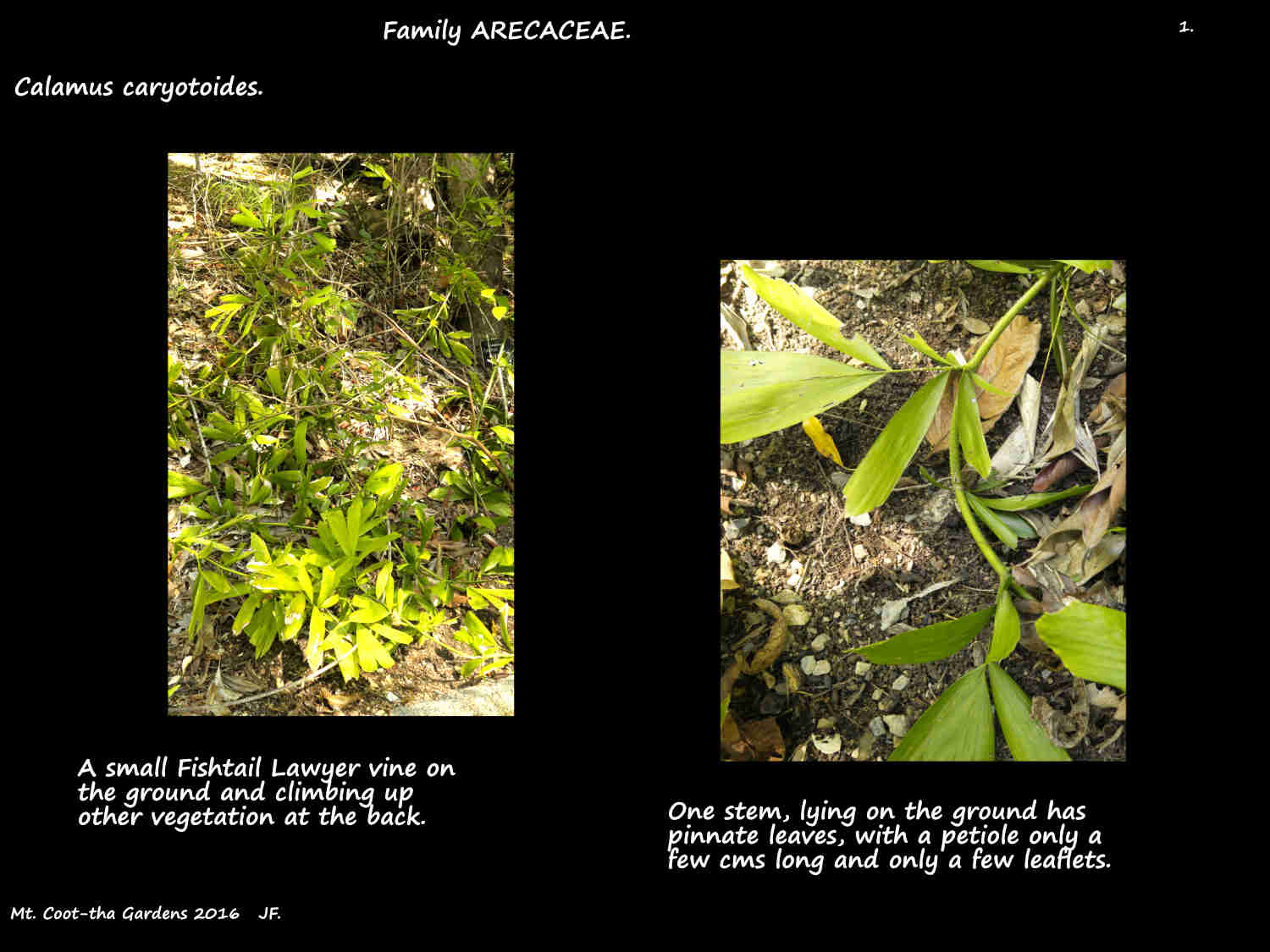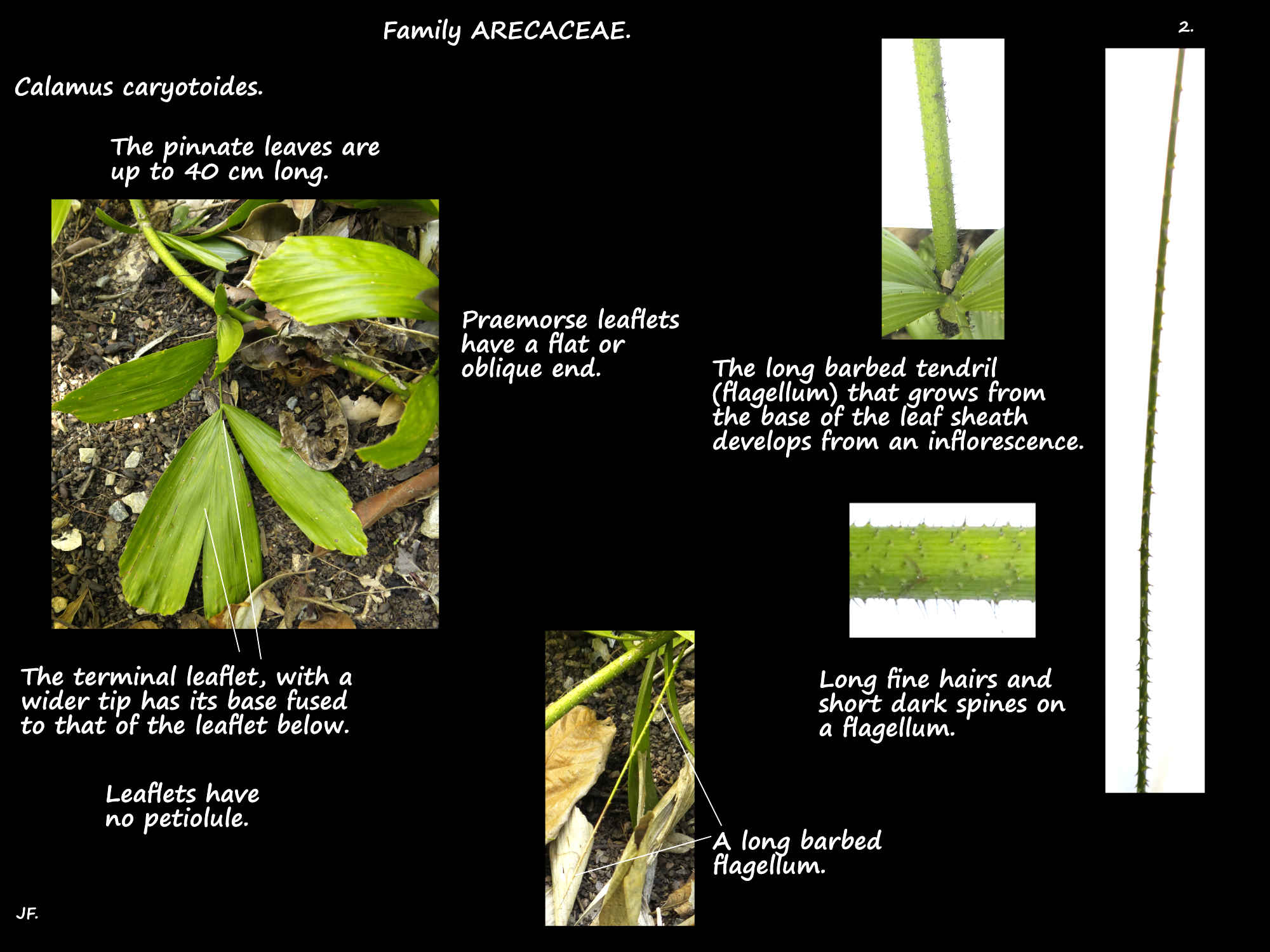The Fish-tail lawyer vine is a climbing palm native to N.E. Queensland.
It is also known as the Rattan palm, Climbing palm and Fishtail rattan.
They are a clustering palm with fibrous roots and stems up to 10 or 15 m long.
The clumps, with up to around 10 mature canes can be up to 5 m wide.
The stems, under 2 cm aross are flexible.
Young green stems have spines while older sections are smooth.
The pinnate leaves, up to 30 or 40 cm long are spaced up to 20 cm apart along the stems.
Leaves have no petiole or one up to 12 cm long with scattered 2 mm long wide-based spines.
The tubular leaf sheaths, up to 15 cm long have dark spines (spiny hairs) 5 to 10 mm long.
The blade midrib (rachis), is grooved on the upper surface, rounded or angled below and has scattered downward curved spines.
The rachis has up to 10 or 12 leaflets, with no petiolule, that may or may not be regularly arranged.
Leaflets, 15 to 25 cm long have a narrow base widening to a jagged 3 to 6 cm wide end that is flat or angled (praemorse).
The terminal leaflet, which has a wider end has its base fused with that of the leaflet below.
These fishtail leaflets are like those of Caryota species (see Caryota mitis the Fishtail palm).
The leaflet midrib is not prominent but there are 3 prominent longitudinal veins.
The lower surface is a paler green than the upper surface.
There are spines around 2 mm long on the leaflet edges and along the midrib.
There are no spines on the upper surface.
From the base of the leaf sheath on the side opposite the petiole is a thin tendril 3 (4) m long.
These flagellae have backward curving hooks that aid in climbing.
The leaves have no cirrus – a similar whip-like structure from the leaf tips.
Male and female inflorescences, up to 2.5 m long are on separate palms.
The pendulous inflorescences grow from the inner base of the leaf sheaths on the side opposite the petiole.
The females are sparsely branched, the males more so and there are bracts at the base of all the branches.
The ultimate branches (rachillae) hold pale cream to white flowers up to 4 mm long and 2 mm wide.
Male flowers have 6 tepals around 1 mm wide in 2 whorls of three.
Those in the outer whorl are 2.5 mm long and the inner ones are around 4 mm long.
There are 6 fertile stamens and there may be a tiny pistillode.
The sterile male beside each female has no pollen in the anthers.
In female flowers the outer tepals, around 2 mm long have their bases fused.
The 3 inner tepals are less than 0.5 mm longer.
The 6 staminodes, around 1.5 mm high have sterile anthers with 2 long basal appendages.
The ovary has 3 locules each with 1 ovule but usually only one develops.
The lower part of the ovary has scales and there are nectary glands beside it.
The 3 curved stigma lobes are around 1.5 mm long.
Fruit, up to 2 cm across are typically round and have 1 seed.
The orange to brown skin has slightly overlapping scales that are regularly arranged.
There is almost no fleshy layer around the roughly 8 mm long and 5 mm wide seed which is flat on one side.
J.F.




